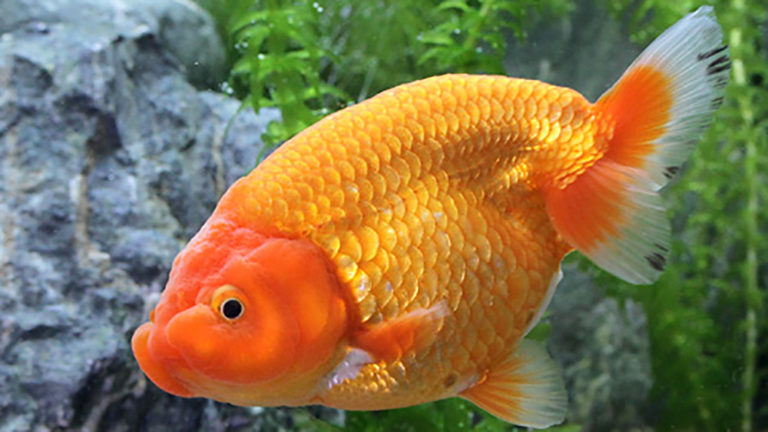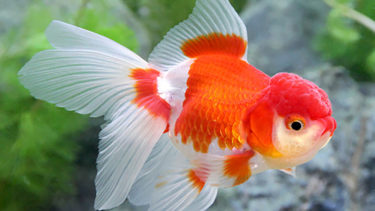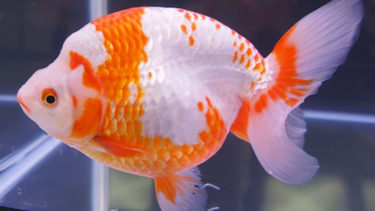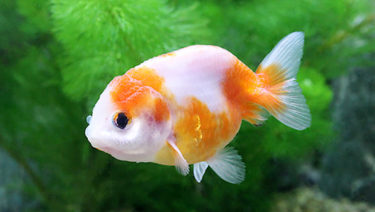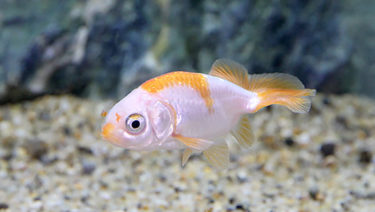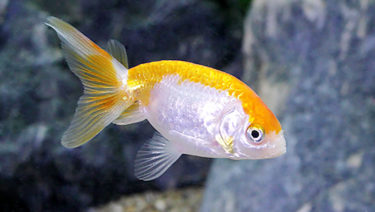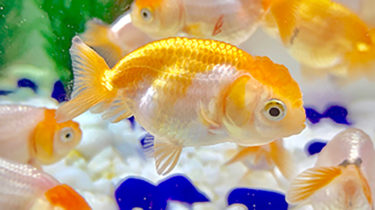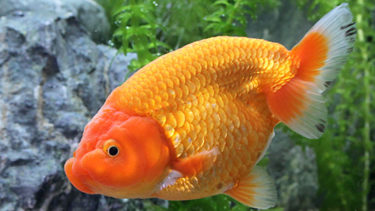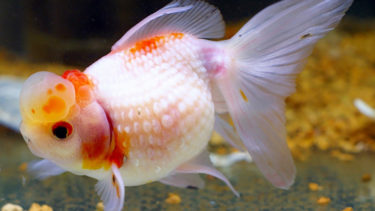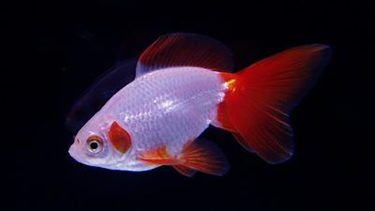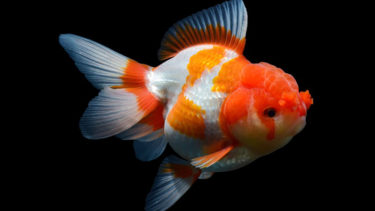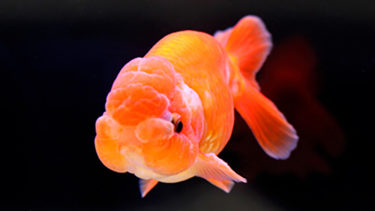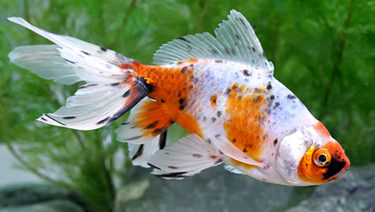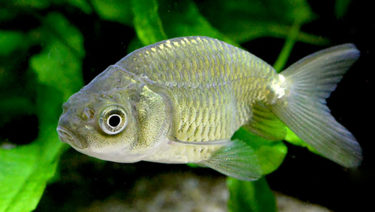The Ranchu is a goldfish with a well-developed fleshy head like the Dutch lionhead, but unlike other goldfish, it is unique in that it has no dorsal fin. In this article, we would like to explain in detail the characteristics of the Ranchu and how to keep it.
What is Ranchu?
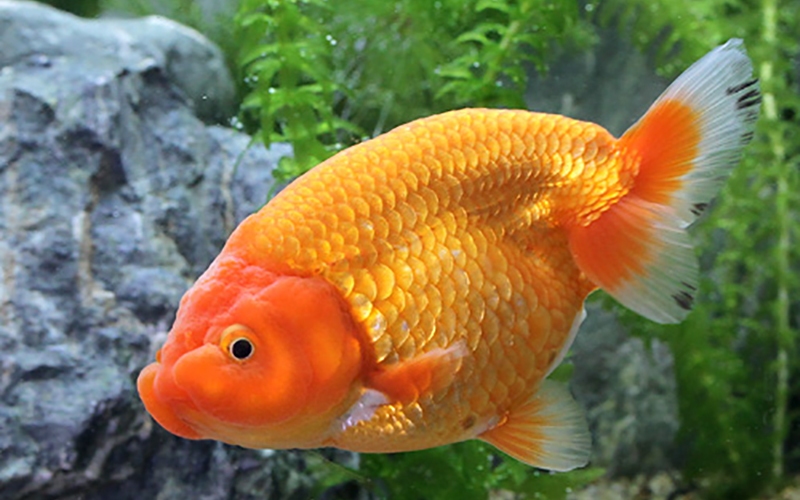
The Ranchu is a goldfish with a well-developed fleshy head like the Dutch lionhead, but unlike other goldfish, it does not have a dorsal fin. All goldfish in the Ranchu lineage do not have a dorsal fin. They also have a short tail fin.With features like that, the silhouette of the body appears to be gathered in the center, making it look round and round. This unique silhouette is one of the Ranchu's most attractive features. And the Ranchu is sometimes commonly described as the "king of goldfish. The Ranchu's large, grown-up appearance is a dignified one that is worthy of being called the king. It is said that the largest percentage of goldfish lovers in Japan are Ranchu lovers. Therefore, it can be said that the Ranchu division attracts the most attention at goldfish fairs.
The orchid lionhead is a goldfish characterized by its caudal fin and head mass. It is a goldfish that can be kept in a variety of ways depending on its body color, the size of the fleshy mass on its head, and the way its tail fin spreads. In this article, we would like to explain in detail the characteristics of the Woran Shishigashira and how to keep it. What is the Woran lionfish [...]
origins of the orchid castings
The Ranchu is a breed created from a goldfish called Marco, which was brought to Japan from China by the Dutch who were trading on Dejima Island in Nagasaki during the Edo period. The Marco is a goldfish named for its round body without a dorsal fin. And the main difference between the Marco and the Ranchu is the presence or absence of a head mass. Marco does not have a fleshy head like Ranchu. In Japan's oldest known goldfish breeding book, "Kingyo Sodate Gusa" by Yoshiyuki Adachi, published in 1748, the middle of the Edo period, there is a description of "Ranchu, Korean goldfish," which later became the Ranchu.Therefore, ukiyoe and other paintings made in the mid to late Edo period depict eggworms, and the ones depicted are called eggworms. It is said that the present-day ranunculid with a flesh-colored mass was improved by Kamekichi Ishikawa I, who was in Tokyo from the end of the Edo period to the Meiji period (1868-1912), thereby laying the foundation for the modern ranunculid. Since then, improvements have been repeated by numerous enthusiasts up to the present day.
Many people think that goldfish are the goldfish that you see at fairs and festivals in the summer, and that there are many different kinds of goldfish. And it is no exaggeration to say that each type of goldfish has its own characteristics, and that is the best part about goldfish [...]
round-armed and long-armed
men's hairstyle (Edo period)
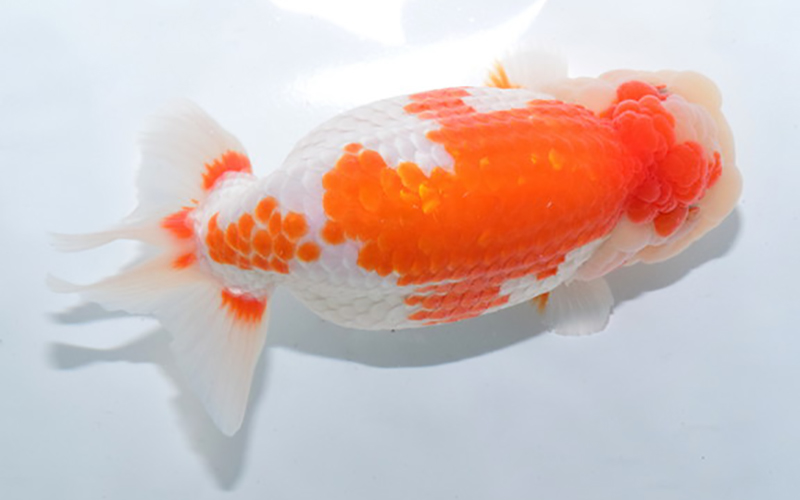
Ranchu may be classified into two types, round-armed and long-armed, based on differences in body shape and the way they are fleshed out. Let us begin with the characteristics of the round-armed type.Marute is a ranchu with a rounded back when viewed from the side. The rounded back is the reason for the name "marute," and another characteristic of the marute is the presence of a mass on the head. Another characteristic of the round hand is that it has a mass on top of its head, as in the Dutch lion's head.Most types of rhomboids are the type that form on the top of the head. The round hand is close to the royal type of ranchu, giving it a rounded and cute appearance. Therefore, the round hand is recommended for those who like the cute appearance of the ranchu and the way it swims so hard.
long side of timber (etc.)
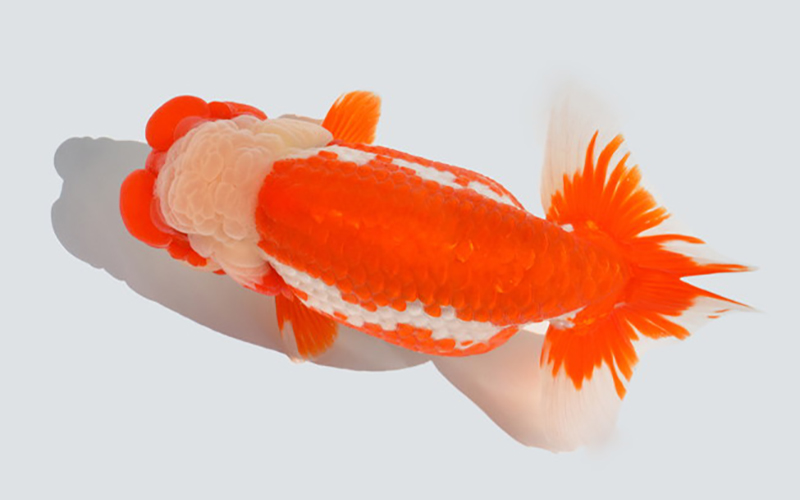
Unlike the round hand, the long hand is characterized by the fact that when the ranchu is viewed from the side, the back is not curved, but is almost straight. The most distinctive feature of nagate is that it has a mass in the front part of its head. If you compare the two, you will clearly see that the long hand has a blister-like mass on the front part of the head.This is the most important characteristic of the long hand. And there are not many other species of goldfish that have such a characteristic of flesh flow as long-armed. In other words, we can say that it is a feature unique to nagate. Nagate is recommended for those who are attracted to the feature of fleshy flow, which is not found in other species, and for those who like smart-bodied individuals among Ranchu.
How to enjoy Ranchu

The best way to enjoy the ranchu is to look at the fleshy mass that develops as it grows and its unique dorsal-finless body shape. If you want to enjoy them, it is recommended to view them from the side (side view) in an aquarium. If you want to enjoy the round and cute shape of the Ranchu, it is recommended to view it from the side.As the ranchu grows, its abdomen becomes rounder, so if you use the side view, you can enjoy its changing body as it grows. If you want to enjoy long-handled ranchu, we recommend that you place them in a pot or other container and view them from above (top view) rather than from the side view. Since the head of the nagate is characterized by the growth of the fleshy mass in the front of the head, we recommend viewing it from above rather than from the side as a way to see the growing fleshy mass more clearly. The Ranchu is a species that has more pronounced features that can be appreciated with the side view and the top view compared to other goldfish, so it can be enjoyed with either view, and it can also be a point of difference in preference, so it is good to try both to find your own preference.
Points to keep in mind when mixing swimmers
When mixing goldfish with other goldfish and other species, there is sometimes uncertainty as to what species is good and what species is not. First,There is no general prohibition against this or that when mixing goldfish with other species.Therefore, depending on the personality and environment of the goldfish you keep, even species that are said to be bad for each other may get along well with each other. However, there is also the matter of compatibility between goldfish. If you put incompatible goldfish together, there is a high possibility that they will fight or that only one of them will monopolize the food. However, as explained in the beginning, there is no prohibition for goldfish, so if you want to mix them, it may be OK to do so. Now, let us explain which goldfish are compatible with Japanese goldfish and which are not.
Compatible goldfish
Goldfish that are most compatible with ranchu are ranchu-type goldfish such as Edonishiki (Edo Nishiki) and Sakura Nishiki (Sakura Nishiki).Since the Ranchu breed is a very poor swimmer, we recommend a Ranchu-type goldfish, which is also a poor swimmer, so that the goldfish will be less likely to eat food first or be chased by other goldfish, which will reduce stress.
About Edo Nishiki
About Sakura Nishiki
About Ranchu Type
Incompatible goldfish
Goldfish that are incompatible with ranchu are Japanese goldfish, such as wakin (Japanese goldfish) and comets, which are of the Japanese goldfish type.Many Japanese goldfish are agile and grow large in a short period of time. If they are mixed with Japanese goldfish, please be aware that the Ranchu may be eaten by other Japanese goldfish and the difference in body size may cause them to move away from each other.
About WAKIN
About Comet
About Us
Points to keep in mind when keeping orchid castings

One thing you should definitely be aware of when keeping a ranchu is that the ranchu breed is difficult to keep. Difficult does not mean that they are impossible to keep. The Ranchu is sometimes referred to as the "king of goldfish," and many people who do not know much about goldfish have heard of it, if only by name. However, Ranchu tend to be more sensitive to changes in water temperature than other goldfish, and they have a very high risk of getting sick during the change of seasons. In other words, it is a difficult breed for beginners who are just starting out with goldfish to keep for the first time.We recommend that you first try to keep an easy-to-keep variety and get used to it. The Ranchu is one of the most popular goldfish breeds. For this reason, various enthusiasts are dedicated to keeping Ranchu, so it is fun to talk with them. Ranchu are sensitive to changes in water temperature, so you need to be especially careful when keeping them in places where the water temperature is likely to change. If you keep them in such an environment, it is advisable to use a heater. Ranchu goldfish have a lot of charm and enjoyment, so if you are interested in Ranchu, please try to keep them.
Goldfish derived from orchid castings
Nanjing
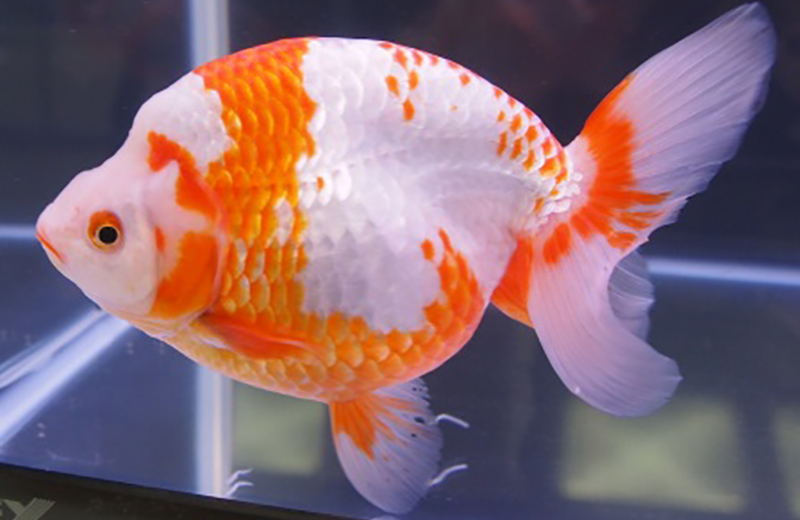
Nankin is a goldfish designated as a natural treasure by Shimane Prefecture.More information about the characteristics of Nanjing and how to keep it is provided in the detailed pages below.
The Nanjing is a goldfish with the characteristics of the Ranchu, which does not have a dorsal fin and a round belly like the Ranchu, but does not have a head mass. In this article, I would like to explain in detail the characteristics of the Nanjing and how to keep it. What is Nanjing? Nanjing is a goldfish that, like the Ranchu, has no dorsal fin and a rounded abdomen [...].
type of brocade
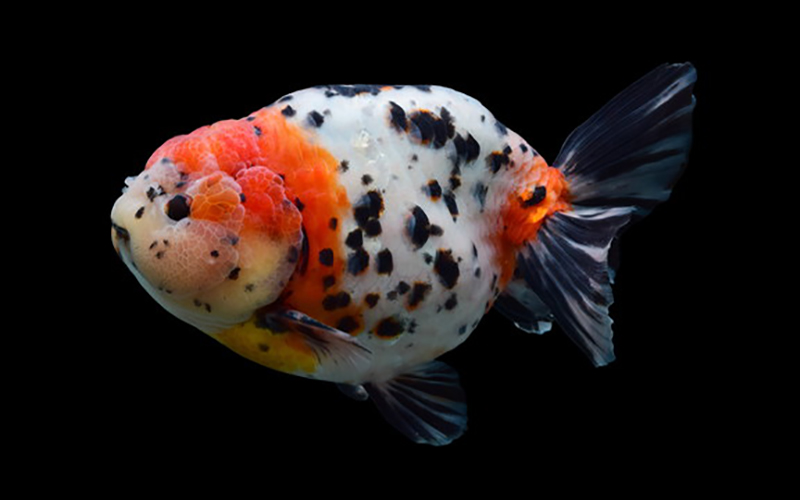
The body shape is not so different from that of the Ranchu, but the body color is the same as that of the Azuma Nishiki, a goldfish with a three-color (calico) pattern.More information about the characteristics of Edo Nishiki and how to keep it is explained in the detailed pages below.
The Edo Nishiki is a goldfish characterized by its lack of a dorsal fin like the Ranchu and its rounded belly, but without the mass of flesh on its head. In this article, I would like to explain in detail the characteristics of the Edo Nishiki and how to keep it. What is the Edo NishikiThe Edo Nishiki is a cross between the Ranchu and the Azuma Nishiki and is a fixed [...].
cherry blossom brocade
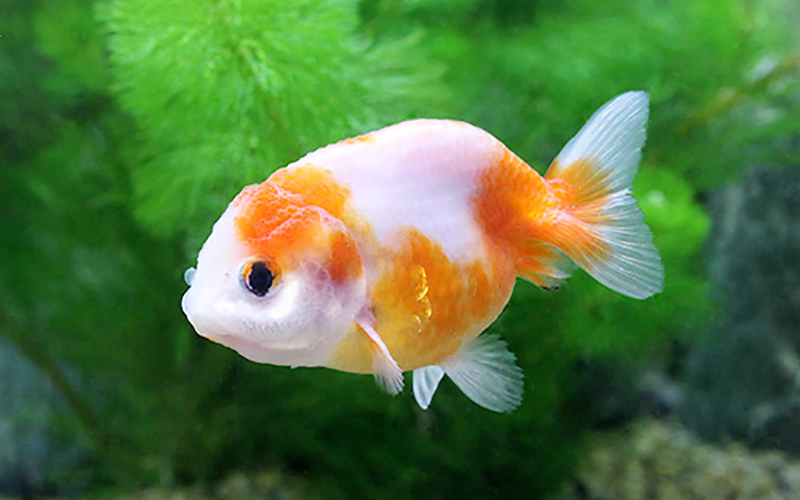
The body shape and other features are not much different from those of orchid castes, but the body color is red and white with mosaic transparent scales, and the overall color is pale pink.More information about the characteristics of Sakura Nishiki and how to keep it can be found in the detailed pages below.
Sakura Nishiki is not so different from Ranchu in body shape, etc., but the major difference between Sakura Nishiki and Ranchu is its red and white chintz scales, which also have the characteristics of mosaic transparent scales. In this article, we would like to explain in detail the characteristics of Sakura Nishiki and how to keep it. What is Sakura Nishiki?
Temminck's dragonfly (Anotogaster osakaensis)
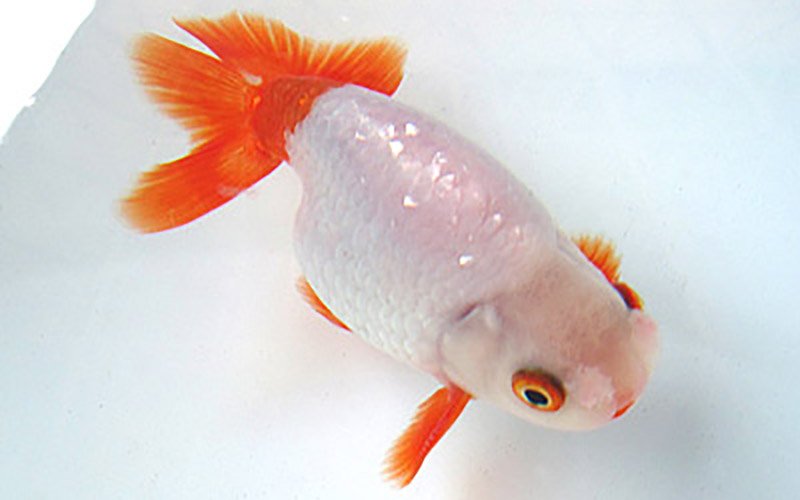
The Osaka Ranchu is one of the oldest classified goldfish in the Ranchu lineage.More information about the characteristics of Osaka Ranchu and how to keep them is provided in the detailed pages below.
The Osaka Ranchu is one of the oldest classified goldfish in the Ranchu lineage, having its roots in the Maruko (Maruko) as well as the Ranchu and Nankin varieties. In this article, we would like to explain in detail the characteristics of the Osaka Ranchu and how to keep it. What is the Osaka Ranchu [...]?
flowers blooming without fertilizer
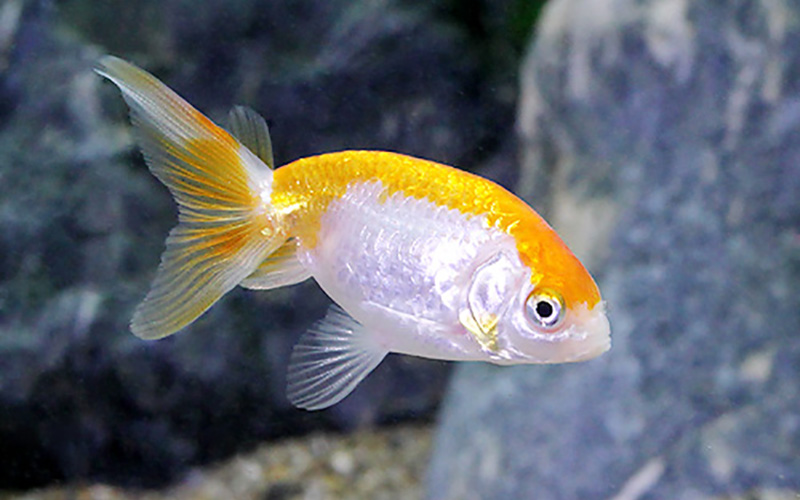
As they grow up, the flower of the coarse goldfish has a long tail fin, making it a smart and beautiful goldfish.More information about the characteristics and how to keep the flower without care is explained in the detailed pages below.
The Hana without a dorsal fin is born from a cross between the dorsal-finless Dutch Shishigashira and the Osaka Ranchu, and as it grows, its tail fin becomes longer, making it a smart and beautiful goldfish. In this article, we would like to explain in detail the characteristics and how to keep the Hana without clothes. What is a Flowers without a [...]...
lionhead (Chrysocyon lions)
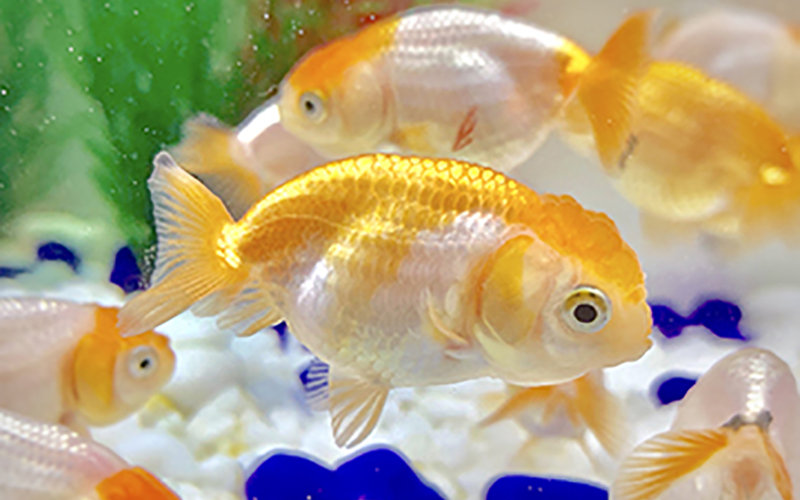
Lionheads were bred in China and are representative of Chinese goldfish.More information about lionhead characteristics and how to keep them can be found in the detailed pages below.
The lionhead is a representative of the Chinese goldfish breed. It is characterized by the lack of a dorsal fin and abnormally developed meatus, as seen in the Ranchu strain. In this article, I would like to explain in detail the characteristics of the lionhead and how to keep it. Lion [...].

